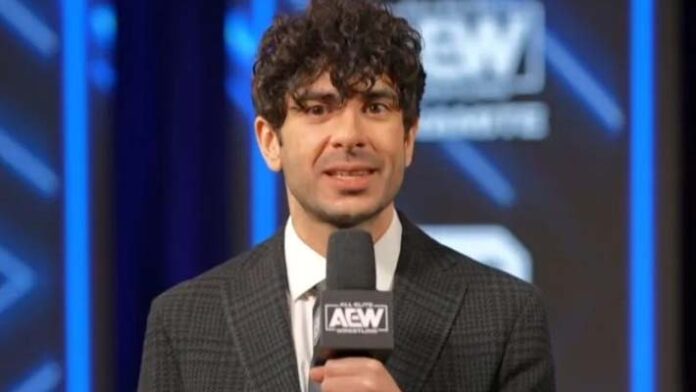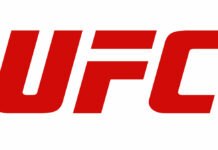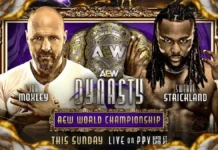
This week, All Elite Wrestling taped its Dynamite program in Cincinnati, the hometown of one of the promotion’s top star, Jon Moxley. This will lead to next week’s Grand Slam event at Arthur Ashe Stadium in New York before the company’s next pay-per-view, Wrestle Dream in Seattle.
A few notes that are important for context, while the record-setting draw in England was proof of the demand for the live product in Europe, it was also more evidence that its much easier to draw in a new market because the novelty of the live event experience adds more of a selling point. By nature, the sizzle of the debut in the UK helped move tickets, which is fine because revenue is revenue. At the same time, it underscored what happens when that sizzle fades domestically when a product lacks substance. For example, All Elite drew a record-setting crowd in Wembley and then didn’t sell out in Chicago for a pay-per-view the following week. It goes without saying that the organization over saturated the market, but the point being, after four years in existence, they’ve toured a sizable portion of the United States in terms of wrestling cities so the novelty of the alternative alone isn’t going to bring fans to the box office.
Understandably, the fans wanted to support AEW when it launched because it was a chance to spark the sports entertainment industry that had been extremely stagnant for years, and in some respects, that goal was achieved. However, as the organization evolved in both its role in the business and the presentation of the product, it must stand on its own merits. That scenario also yielded mixed results.
The status of All Elite Wrestling is such an odd dichotomy at times, as the league seems to either hit a home run or completely miss the mark, both in terms of the booking of its on-screen product, as well as its backstage drama.
That entire situation was summed up well in how this week’s edition of Dynamite played out in Cincinnati. No, the sky isn’t falling, and as much as some might hope for it, AEW isn’t going out of business. The Khan family has the money to keep Tony’s project around as long as he wants to play promoter. That being said, those that somehow hope for the downfall of All Elite are completely foolish. With as much drek that Tony might script, make no mistake about it, the pro wrestling business is much better off with AEW than it is without a second national organization. As cringe worthy and counterproductive as the Adam Cole/MJF storyline is, you aren’t going to see a stellar match-up like the Ricky Starks/Bryan Danielson bout on WWE programming.
The common knock against Tony Khan is that he’s not a qualified wrestling booker, and that might be a valid criticism. I’ve praised Tony’s passion for the sport and his willingness to fund a wrestling project, but fandom alone doesn’t automatically translate to success. In fact, outside of being a member of a billionaire family that is well-connected in the sports and television business, what exactly qualified Tony to be the booker of a national pro wrestling organization? I’m not trying to take a jab at Tony, but rather to point out that he made the leap from a just a fan to the owner of a company without any experience at any level of sports entertainment. He didn’t work for anyone in the business to truly learn the finer points of the genre. I don’t think that’s an unfair standard, especially because so many of the most accomplished bookers had the chance to learn from others before they put their on spin on a territory or promotion. For example, Kevin Sullivan is regarded as one of the brightest minds in the history of the industry, and he credited much of what he learned to the legendary Florida promoter, Eddie Graham.
Tony has said himself that Dynamite is based on concepts that he originally booked for an E-fed on the internet, and his actually booking reflects a lot of the pitfalls of that philosophy. Simply putting names on paper isn’t booking, it’s matchmaking, and that is very easy because it doesn’t have to translate to the application of the angles on-screen. Sure, Bryan Danielson vs. Kenny Omega is a great match that has an intrinsic value as far as a selling point to the audience, but the circumstances of how the match takes place is what ultimately allows for the ability to maximize the payoff. There’s no doubt that Tony is very good at being a matchmaker, which is putting names on paper that generally seem like that contest will result in a good performance. If that good performance is booked at the right place, at the right time, and in the right scenario is a completely different matter.
Tony Khan often books matches that he wants to see, and technically, since he picks up the tab, he has the right to do that, but if those decisions lead to the overall expansion of the audience is questionable. Tony can cite his charts and graphs, but the bottom line is, if he books a product that the audience is willing to pay for then it will yield success for the company. Revenue and profit are the true barometer of success, not how many times Tony wins “booker of the year” from The Wrestling Observer.
The attempt to parse detail would be too lengthy, but when you consider the women’s division, the pointless continued use of the Ring Of Honor titles as props, and the lame basis of the Cole/MJF angle, you can see a lack of knowledge of how to build storylines. Too often, the direction or lack thereof with the shows is so scattered that there’s a lack of overall direction. The addition of Collision to the AEW line-up only made this problem exponentially more apparent. A prime example is how certain performers are booked for a featured spot and then disappear for months at a time. For example, Lee Moriarty is an outstanding prospect that had the chance to compete against CM Punk, Bryan Danielson, and Katsuyori Shibata. In theory, you book those matches because there’s a plan in place to make Moriarty a bigger star in the process, but those three bouts didn’t elevate his status among the AEW landscape because there was zero follow-up to it.
One of the main E-fed booking troupes that Tony uses so often that it’s almost comical is a ridiculous amount of tournaments. The structure of a tournament more or less eliminates the necessity for compelling booking because it’s quite literally a simple narrative that is based on matchmaking throughout the brackets. At one point, there were multiple tournaments going on at the same time with the tag team eliminator tournament, as well as the Owen Hart tournament. Finally, the recent world title eliminator tournament had some level of substance to it and thus this week on Dynamite had a rare main event where something looked to be at stake in terms of a storyline.
The reason being, Rodrick Strong was involved in the Cole/MJF feud, and we saw the Samoa Joe confrontation at All Out so there were two realistic options to see who would challenge MJF at Grand Slam. There was a reason to watch the match because it determined the next chapter in the storyline. Furthermore, Samoa Joe was made to look like a monster and choked out Adam Cole for an added element of intensity. None of this was reinventing the wheel, and it doesn’t have to be, it was common sense storytelling that pushed a credible challenger for the world championship next week.
It was a great segment and proved that despite his age or any injuries, Samoa Joe is still a top quality performer. It sets the stage for an anticipated title match that gives viewers a reason to watch the show. The problem is, this type of scenario where AEW has a concise and defined storyline that logically connects all the dots is more often than not the exception to the rule for a product too scattered for the fans to truly invest in the results of the shows.
What do you think? Share your thoughts, opinions, feedback, and anything else that was raised on Twitter @PWMania and Facebook.com/PWMania.
Until next week
-Jim LaMotta
E mail [email protected] | You can follow me on Instagram, Facebook, & Threads @jimlamotta89







